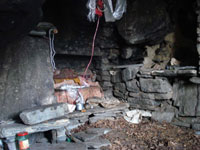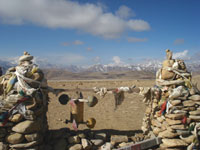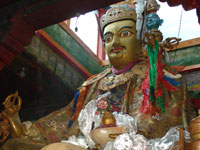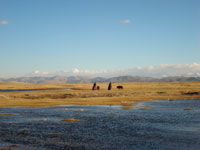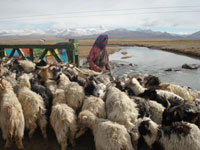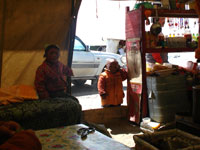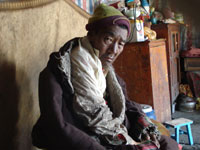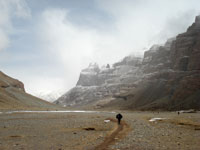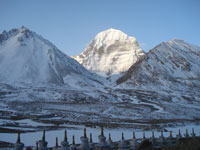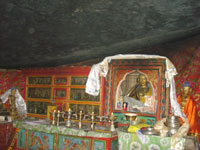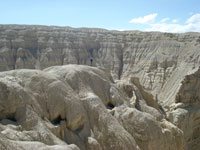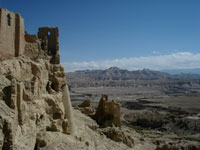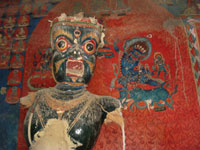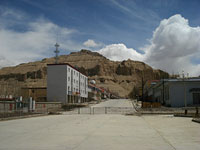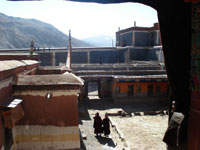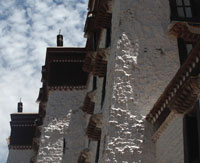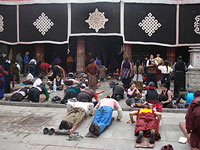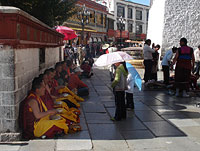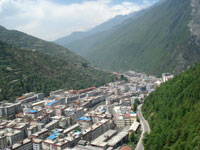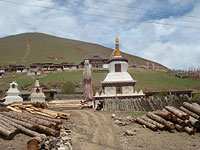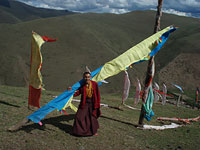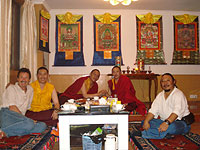I flew back to Kathmandu ($352 for a 55 minute flight) and met Drew who then went to East Tibet (now Sichuan Province) to visit Khempo.
I (Drew) flew from Bangkok to Chengdu around $400 round trip, & after a few nights at Sims Cozy Guest House met up with Khempo, & we joined a Land cruiser for the trip to Khempos village, which is really Kham but has technically been part of Szechuan province since 1949. There are cars that leave from the Tibetan area to Luoho for 200Y per person, but we were eight people squeezed into the car, two in front, four in the middle & a Chinese girl & me in what was basically the luggage space. It was not really what one would call a deluxe tour. After about six hours we arrived at Kanjing, in the photo you can see this boom town squeezed between the mountains, with lots of construction going on & brand new reconstructed Tibetan Gompas. From Kanjing west, the villages, landscape, & animals are totally Tibetan, & for the next nine hours you rarely see anyone Chinese, except where there is a town, then there are Chinese restaurateurs, merchants, & occasional soldiers. This is a pretty prosperous area, very fine Tibetan houses, rebuilt Gompas, & posters of the Dalai Lama which are banned in Tibet proper. People are very friendly, jovial & are allowed to decorate their homes in the old Tibetan style, with painted windows, & shrine rooms, & rebuilt Gompas. This area is much more Tibetan than Lhasa which is now a large Chinese city.

